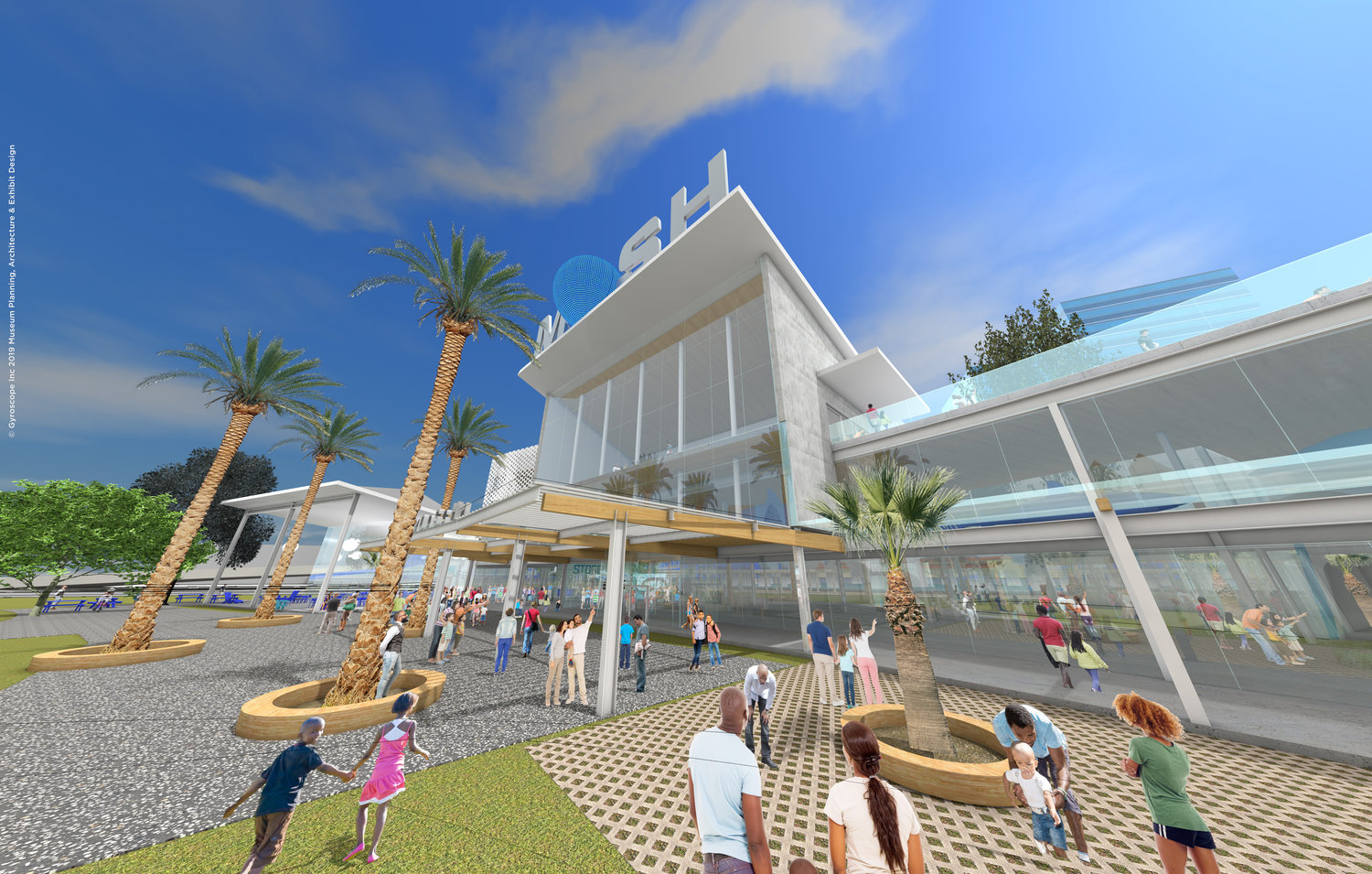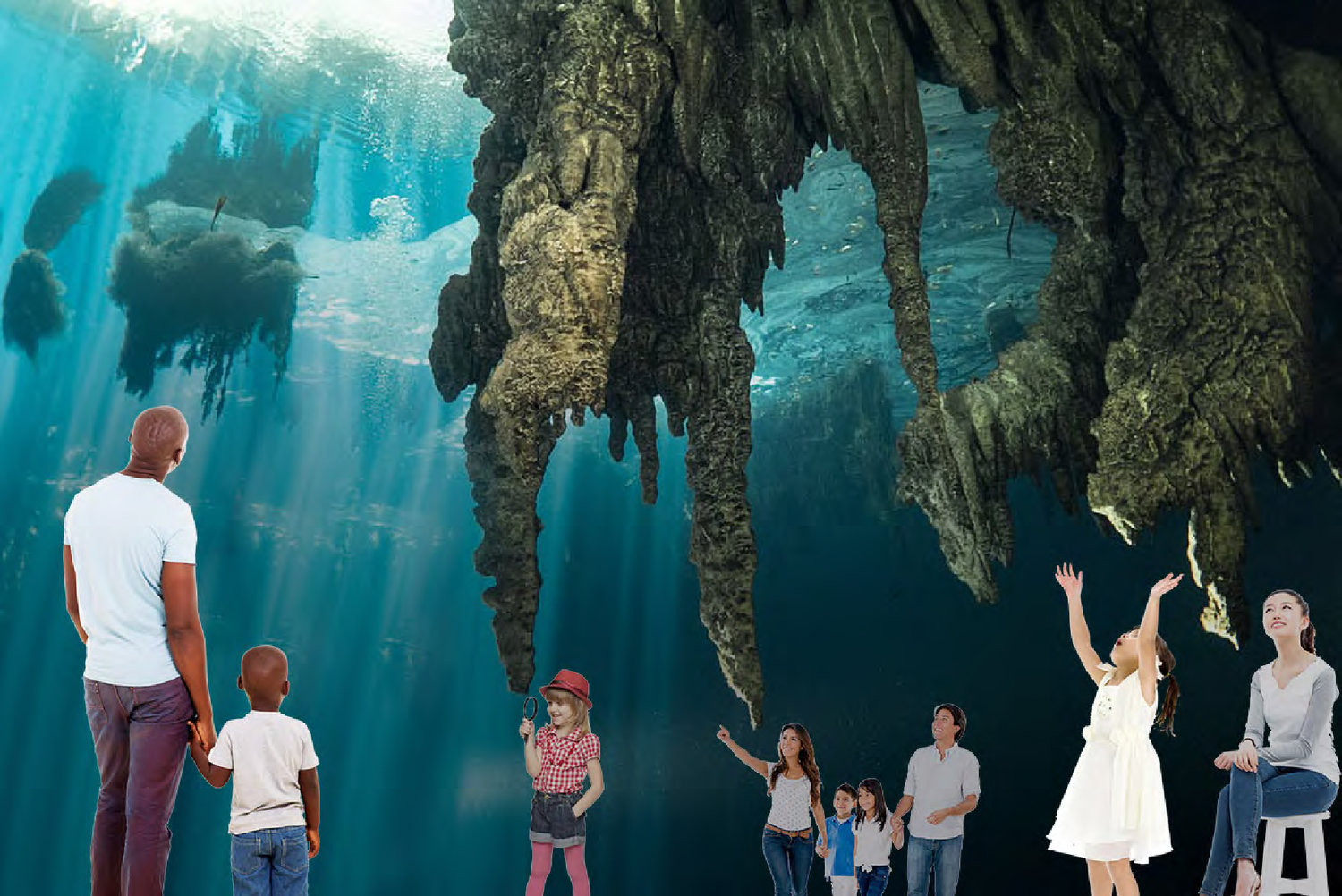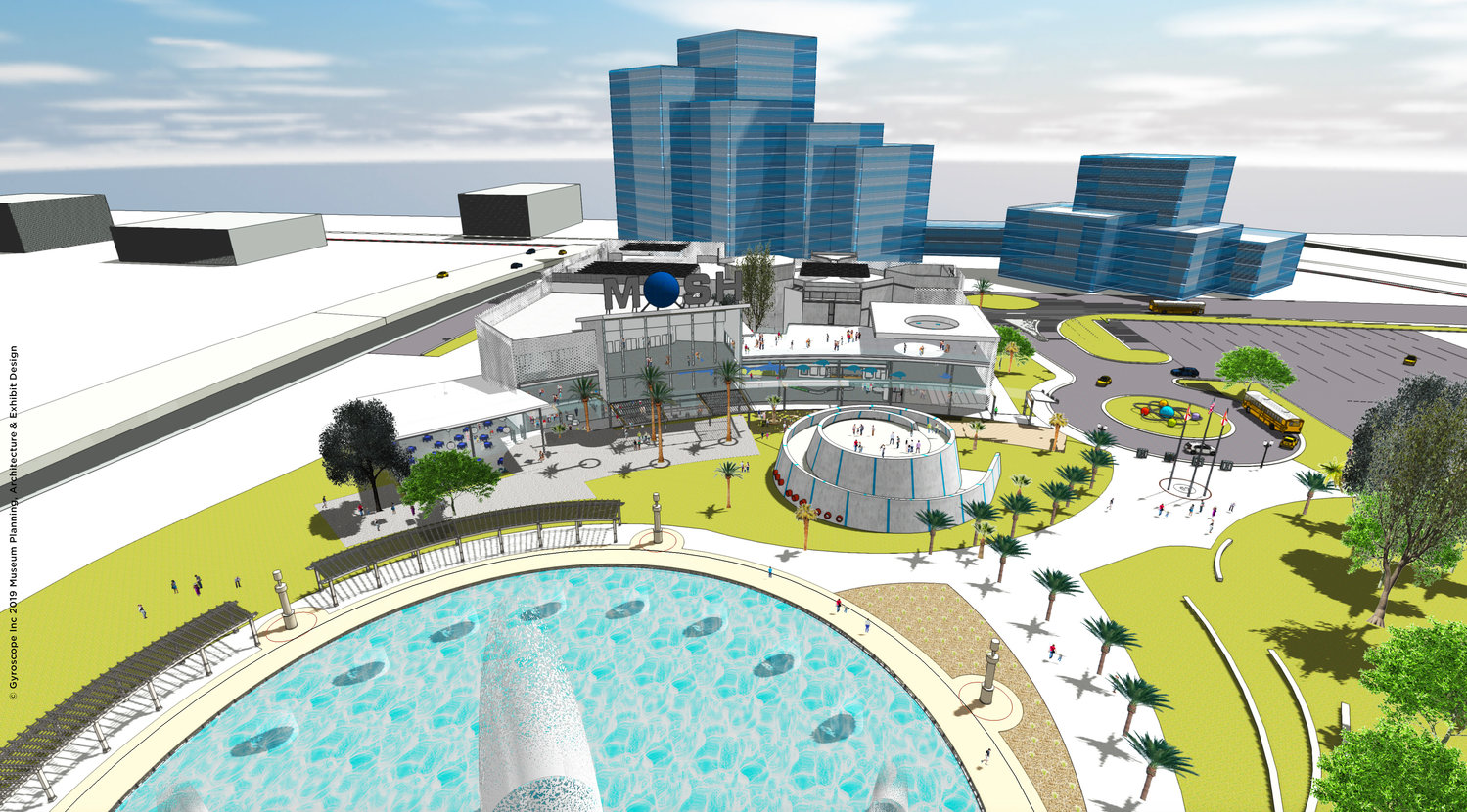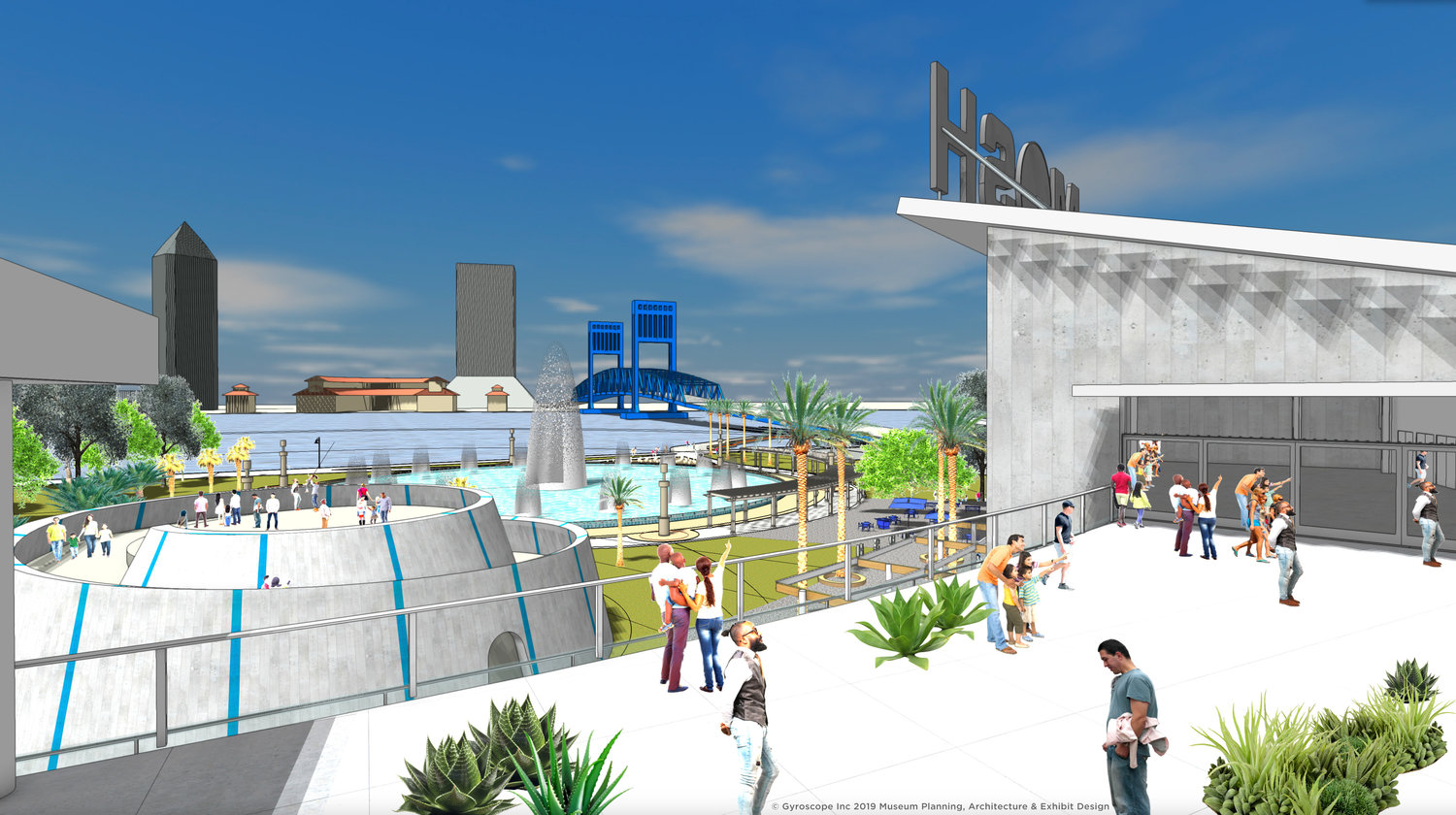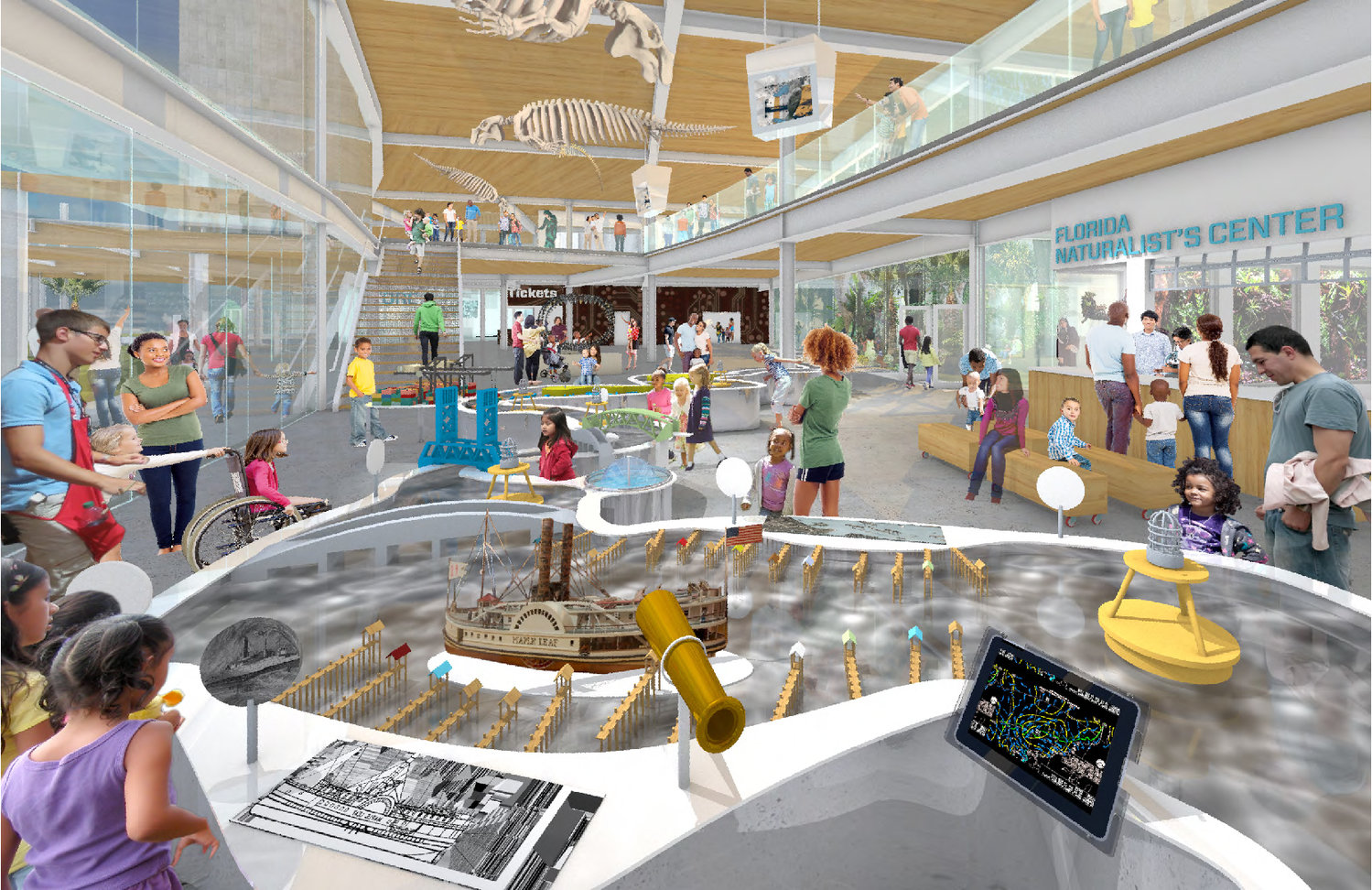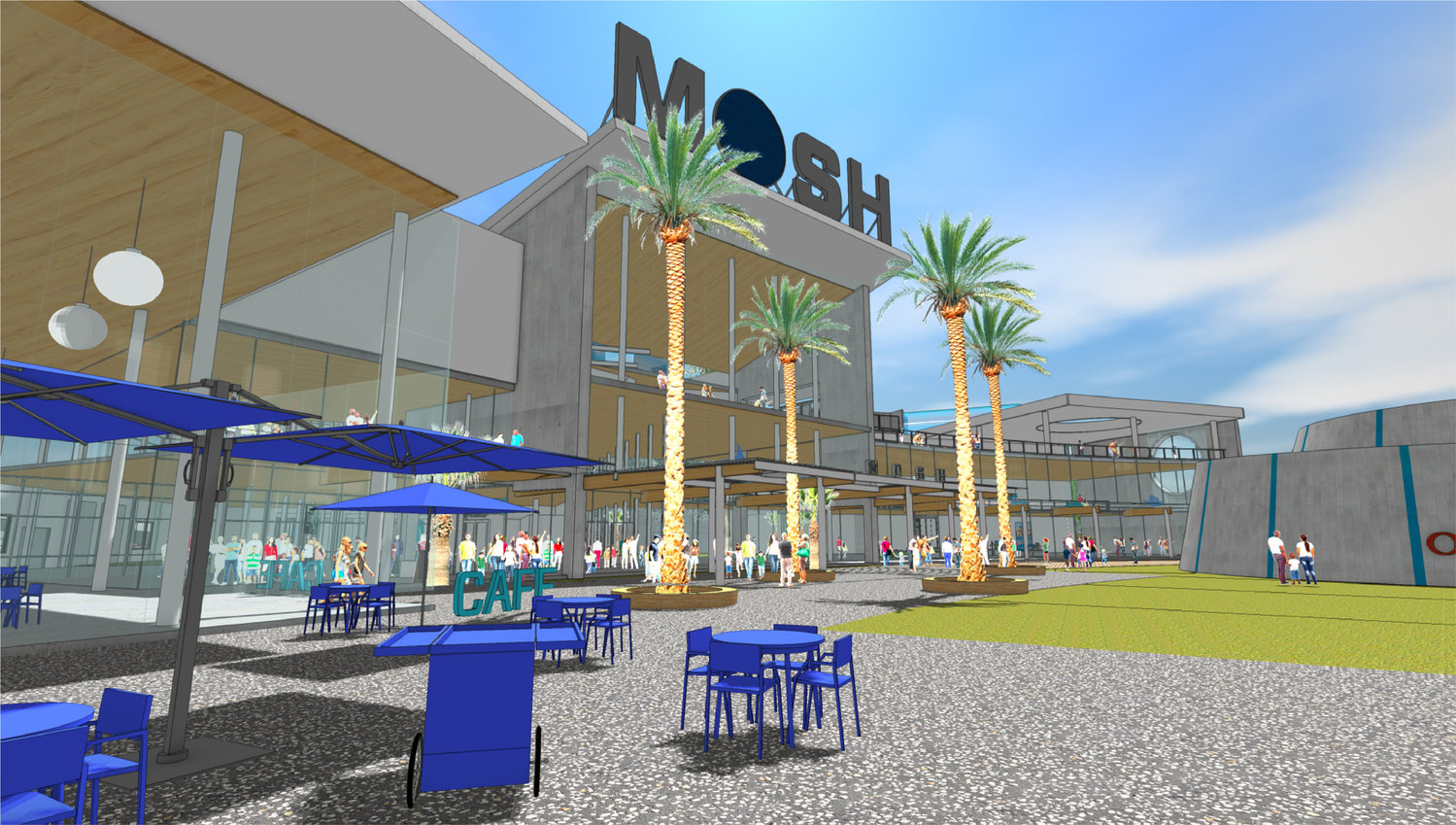MOSH 2.0
Museum’s proposed renovations bring Jacksonville the future of science AND history
The museum is brightly lit, open-concept and reflects the native ecosystems that surround it. Welcome to MOSH 2.0, where Jacksonville’s history meets its future. While the future might not hold flying cars, the projected museum does paint an innovative and forward-facing picture of science as a public gathering space within the city.
The estimated $80 million renovation is expected to conclude in 2023. The upgrade is no small project, with a total square footage increase from 77,000 to 120,000. The plan also involves the reorientation of the entryway toward the St. Johns River and the enhancement of the Museum’s range and capacities to allow for all new exhibits, installations, programming and immersive experiences that feature new technologies. If that wasn’t enough, the design also introduces an outdoor café, rooftop event space and modern, “maker” spaces. All-in-all, it’s a significant facelift for the organization, which was originally a children’s museum located in a Victorian mansion in Riverside. In 1967, that location featured live baby opossums as part of their “hands-on living collection.”
Opossums are a far cry from the innovative and technically advanced installations of the 2023 MOSH, which will boast a “Faces of Jax”-curved LED panel sculpture that scans and displays guests’ faces to highlight a cultural ecosystem of residents and visitors.
The aspect of “hands-on” learning has remained a big part of the museum’s mission, however, growing exponentially over the past few years. Maria Hane, president of the Museum, said a large reason for the renovation is that MOSH has simply outgrown itself.
“We're constantly at capacity,” Hane said. “We're seeing (the number of people served) climb and climb and even this year it looks like we're going to be serving more students than we have at any time in the past.”
MOSH has worked closely with schools since its inception, carrying out its mission to inspire early STEM learning initiatives and foster hands-on learning from the ground up. Hane said the museum’s focus on “experiential learning as opposed to a formal delivery,” makes it instrumental in crafting a love of science from an early age. To continue to provide this asset, the museum needs to stay up to date with an evolving understanding of not only science, but even history as well.
Hane said they are looking at creating a “choose your own narrative” history exhibition to “turn inside out” perspectives on what history is and means.
“When you think of building a museum that speaks to humanities and culture, what do (you) think of that?” Hane said. “That experience becomes very personal when you don’t see yourself in it. … When we are talking about the diversity of cultures and communities in Jacksonville, (we want to) use a much broader set of lens for interpreting history. It's this idea that gives us a sort of a concept of using windows into the past to see windows into the future. (These windows will be) sort of digital kiosks that you can again kind of choose the narrative for your visit. So, you could see the history or the culture of the Timucuan or it could be a lens through civil rights history. Every time you come in you could choose a different narrative in a different path to explore.”
Another aspect of MOSH 2.0’s design is the transition of the front entrance toward the St. Johns River. The repositioning of the door isn’t only more scenic, but representative of the museum’s realignment with Jacksonville’s natural ecosystem as a fundamental aspect of its character.
“We know now that between 12,000-14,000 years ago, the first cultures settled on St. Johns River,” Hane said. “There is a history of trade along the river. There is a history of different cultures and different communities and the evolution of those communities into the city that we call Jacksonville now. The river really it tells a story of history and innovation and transportation and tells a story about economic development.”
The entrance, overlooking the St. Johns, will also host a new experiential learning walk-through aquifer exhibit and a water quality bio-lab for visitors to understand water sampling and analysis, bioplastics and oil cleanup.
Hanes sees the future of MOSH as reaching out toward the surrounding community, every part of it, and welcoming them within. Hanes pointed at the museum’s slogan, “Curiosity Welcome,” and noted it has more meaning now than ever.
“(History) left a lot of people on the side of the road,” Hanes said. “We talked about ‘Curiosity Welcome.’ That’s for everybody, for all people to feel welcomed.”


